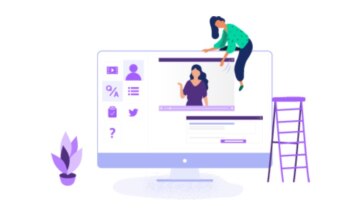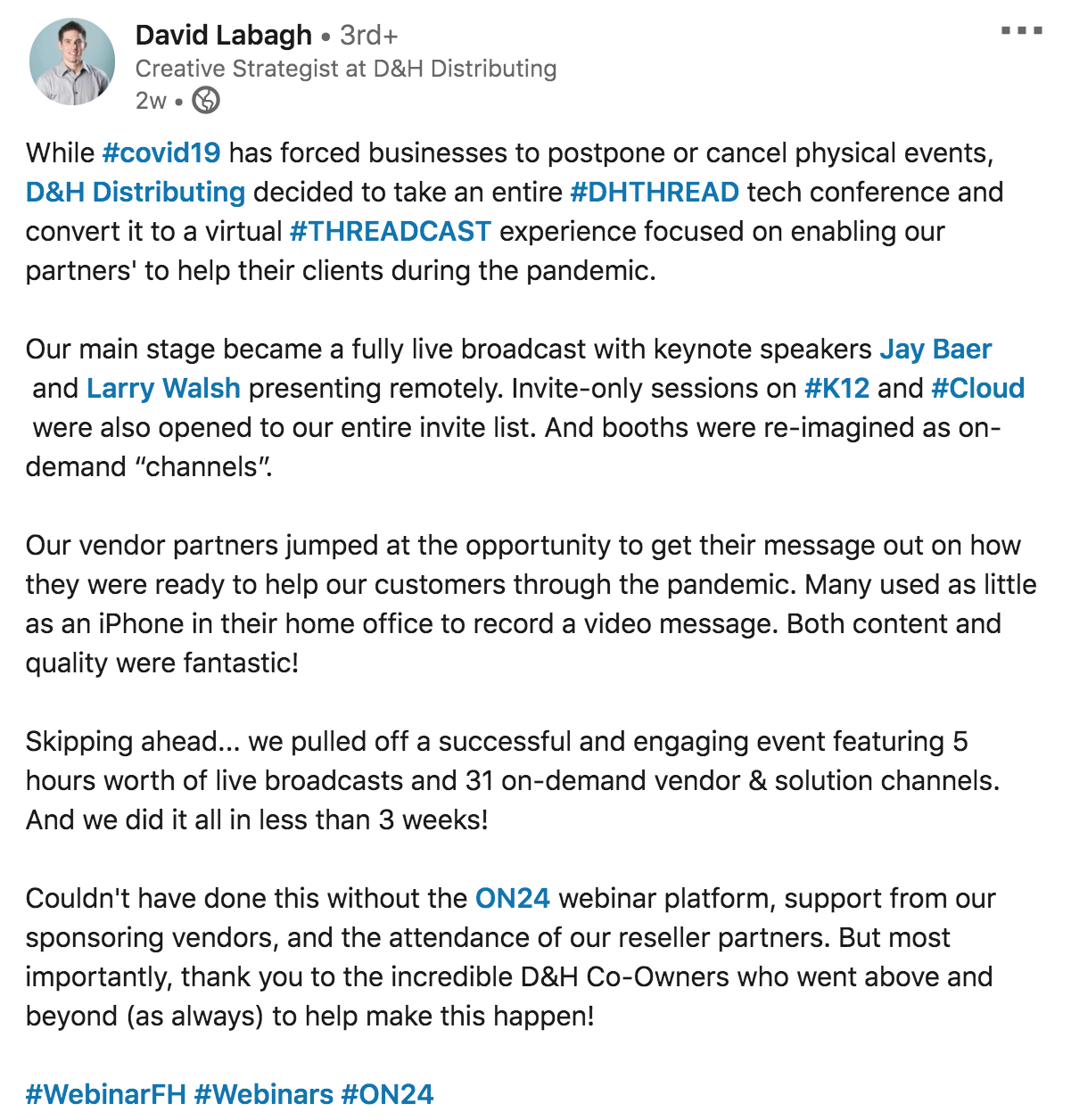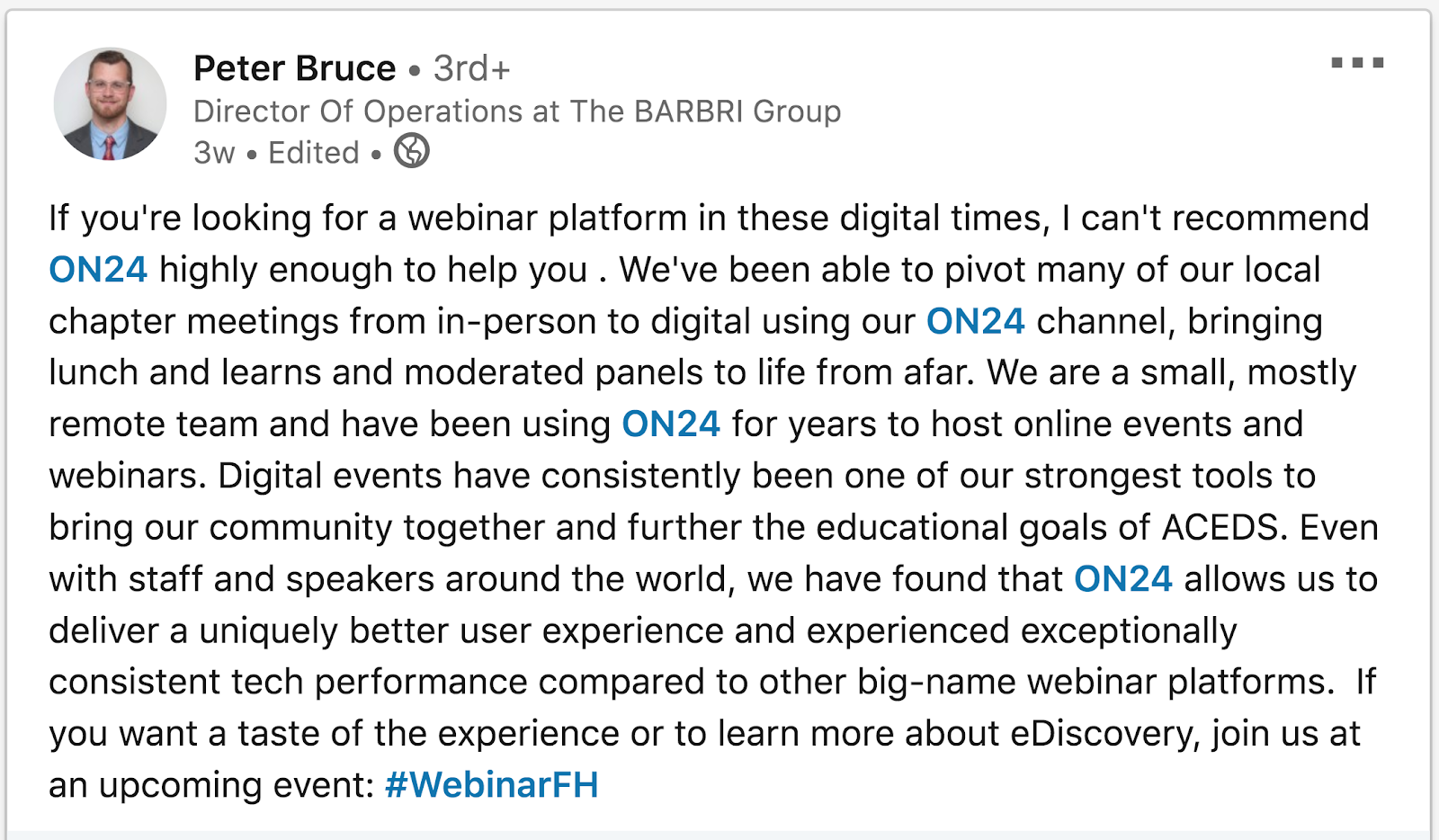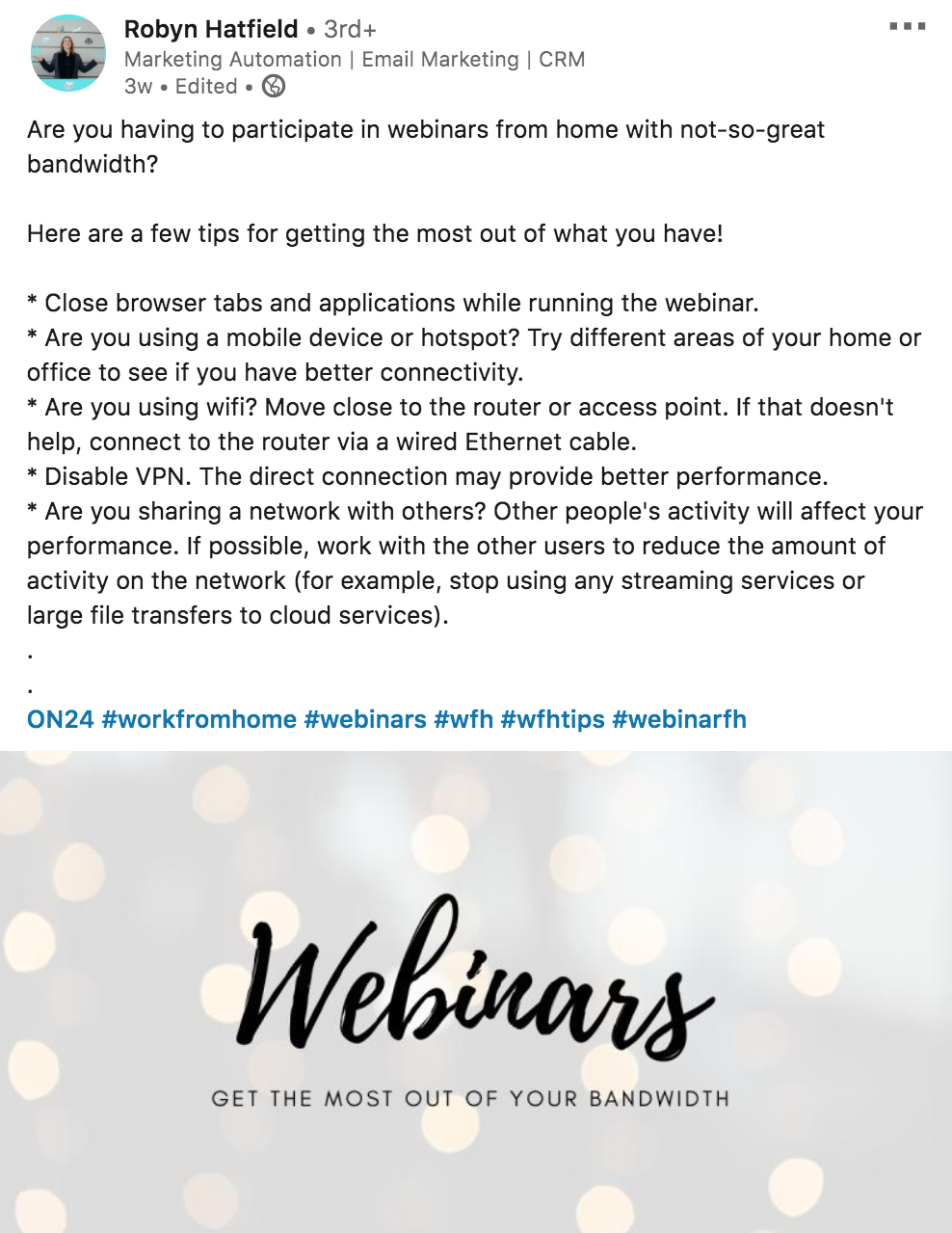Four Tips for Transitioning to a Digital-First World

Marketers are waking up to the fact that we now live in a digital-first world. And you know what? They’re pretty okay with that. After all, B2B marketers have been touting the digital revolution for some time now.
So how are digital-ready marketers adapting to our new virtual workspace? By being ready to make the switch to digital. In fact, the #webinerd community is expert at driving these digital-first initiatives. Here are three examples of how:
D&H Distributing Takes Tech Conference Digital

D&H Distributing’s George Gunnett, a Multimedia Designer and Video Producer, and David Labagh, a Creative Strategist, transitioned their physical #DHThread tech conference into a digital #ThreadCast experience in less than three weeks.
How did they make the transition so fast? By breaking down what they already had done and translating it to a digital environment they’re familiar with. For example, the team decided that vendors could replicate physical booths as unique channels that attendees could visit for an overview of a vendor’s services.
D&H’s virtual program also featured five hours of live discussions with 31 supplemental on-demand vendor and solutions channels. D&H even took advantage of ON24’s Facebook Live Connector to livestream its event to its Facebook audience.
The BARBRI Group Leverages Digital Events to Reach Goals

As Director of Operations for The BARBRI Group, Peter Bruce, is a huge fan of digital events. With social distancing orders in place, he and his colleagues have transitioned many of their usual physical events, such as chapter meetings, lunch-and-learns and moderated panels, into digital experiences.
What’s more, The BARBRI Group can now empower its global roster of experts to participate in its digital experiences, helping the group to connect with its community and further its legal education goals.
Robyn Hatfield Shares #WebinarFH Network Tips

Robyn Hatfield feels your webinaring from home pain. She also knows how you can overcome it. Quickly realizing the trend for meetings and events, Robyn is sharing network and connection tips for fellow webinerds. As a marketing automation and CRM professional for Accruent, Robyn knows how to work around the frustrations of spotty Wi-Fi and has highlighted ways marketers and other work-from-homers can get the most out of their bandwidth.
Four Tips for a Digital-First Approach
1) Adapt Events, Don’t Cancel
You and your colleagues have spent hours planning your event. The venue is reserved, the attendees are registered, the speakers are prepped and the equipment has been tested.
But then you get a call and the venue has to cancel.
You are still ready to go! Take a page from D&H Distributing and translate your physical event into a digital experience so audiences can stay informed and your messages can stay top-of-mind.
2) Open Up Your Experiences
Physical events have — by nature — limited attendance capabilities. Now that your event has shifted online, consider lifting attendance restrictions to reach a broader audience.
Special topic discussions or sessions may encourage audiences to participate — especially those who are interested in your brand but lack the time or resources necessary to attend an in-person event. Unless there is a reason to restrict access (and there can be), open your sessions!
3) Activate on-demand viewing
With on-demand webinars, attendees can get so much more out of your event than they originally expected. Not only does on-demand viewing give your attendees the option of engaging with more content, you may also find that more people attend and thoroughly digest more content from a dedicated virtual event because it’s convenient.
For example, breakout sessions may end up with a larger audience because registrants can now attend every session they want instead of having to pick between topics that may have been scheduled for the same time. Now, they can participate in one live session and the other on-demand.
4) Don’t forget the data
Don’t forget to check out the metrics after your event is over. Digital events and online engagement statistics give you much more data than physical events ever could.
For example, not only can you see who actually attended and engaged with each session while it was happening, but you also get a long-tail, on-demand audience that wouldn’t get from a physical event.
Don’t squander those opportunities. Make sure you capture as much data from your online event as possible and be sure to get that information to the appropriate people to follow up. Consider giving someone a special assignment to guarantee attendees are contacted in a timely fashion and with accurate information.
For more tips, suggestions and guidelines on moving physical events online, check out our other resources:
Digital Alternatives to Cancelling In-Person Events
Taking In-Person Events Virtual? Five Things to Consider